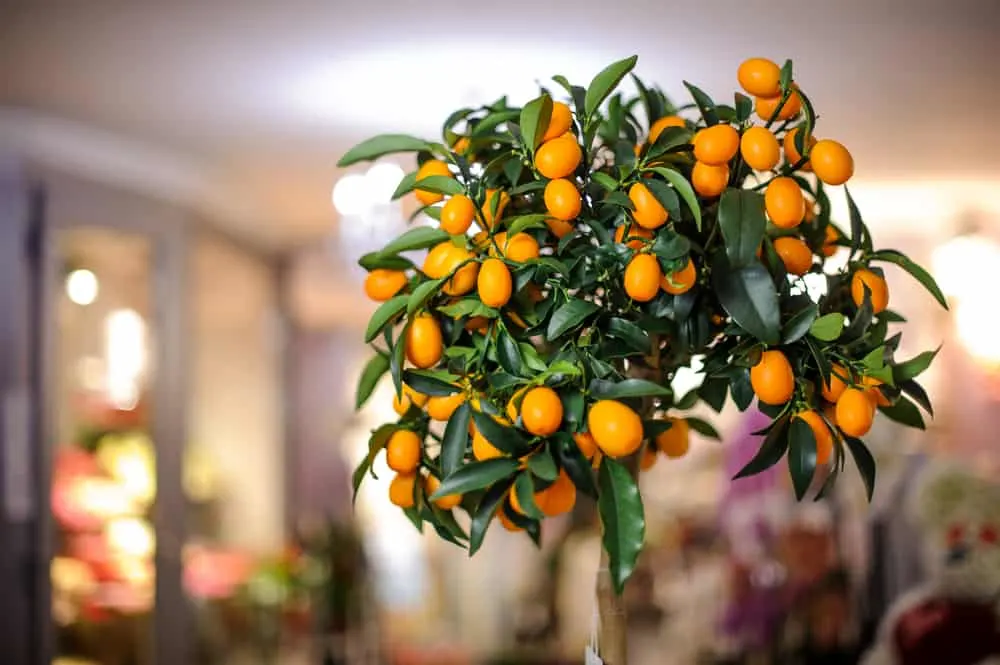
Why on earth would you want to grow a fruit tree in your house?
Why on earth wouldn’t you?
If you’ve got the space, growing a dwarf fruit tree in your home has some excellent perks. Aside from the usual benefits of a houseplant such as beautiful foliage and clean air, you get the added benefit of fruit.
Fruit trees are visually appealing and offer a nice change from the average spider plant or philodendron.
Related Reading: 10 Indoor Trees You Should Try Growing In Your Home
Some things to consider
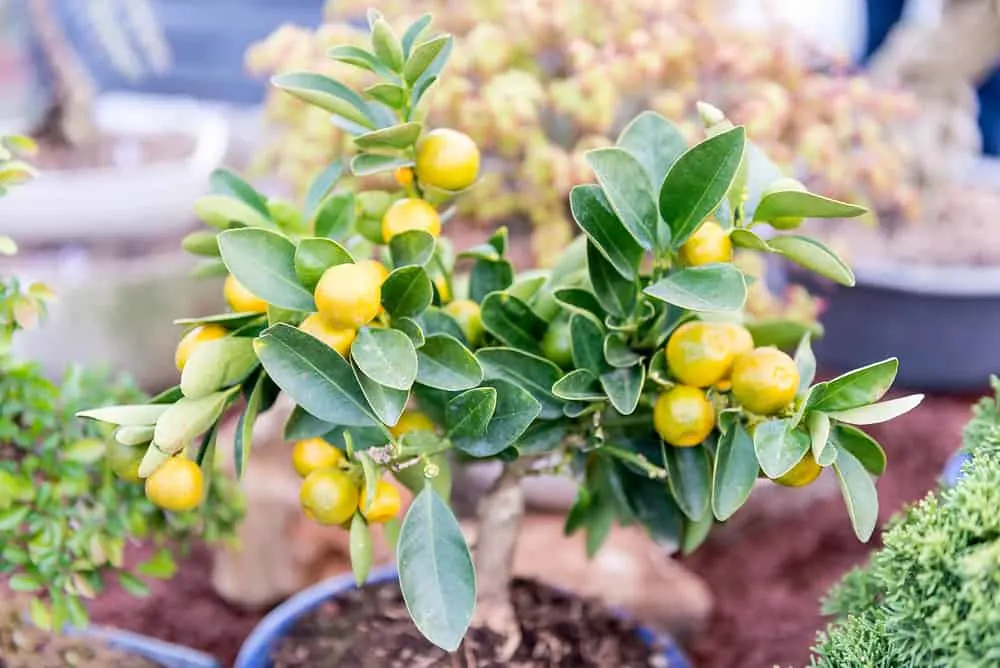
What you are looking for as far as fruit trees are concerned are dwarf varieties. These are trees that are grafted onto specific rootstock that will stay small and compact.
That being said, even dwarf varieties can grow much larger than is reasonable for an indoor plant, so the occasional pruning is necessary to keep their size manageable.
These days, it’s easy to find dwarf fruit trees.
While I always encourage you to support your local nursery, even your big home and garden chains like Lowes and Home Depot carry them.
If you can’t find the fruit tree variety you are searching for locally; you can find it online. Amazon offer a huge variety of indoor fruit trees.
Most of these trees do well in a container. And you may be surprised how many different types of fruit trees you can grow indoors.
If you purchase a tree from a nursery, you may need to repot it right away if the roots are severely cramped. If that’s the case you’ll want to lightly prune the roots and loosen them before repotting your tree. Choose a pot only slightly larger than the one it came in.
If you purchase a tree online, most likely it will come bare. That is to say, it won’t be planted in a pot with dirt. Inspect the roots and trim any that may have been damaged during shipping before planting your tree. Water your newly planted tree thoroughly.
One of the best reasons to grow fruit indoors is the ability to provide the perfect growing environment.
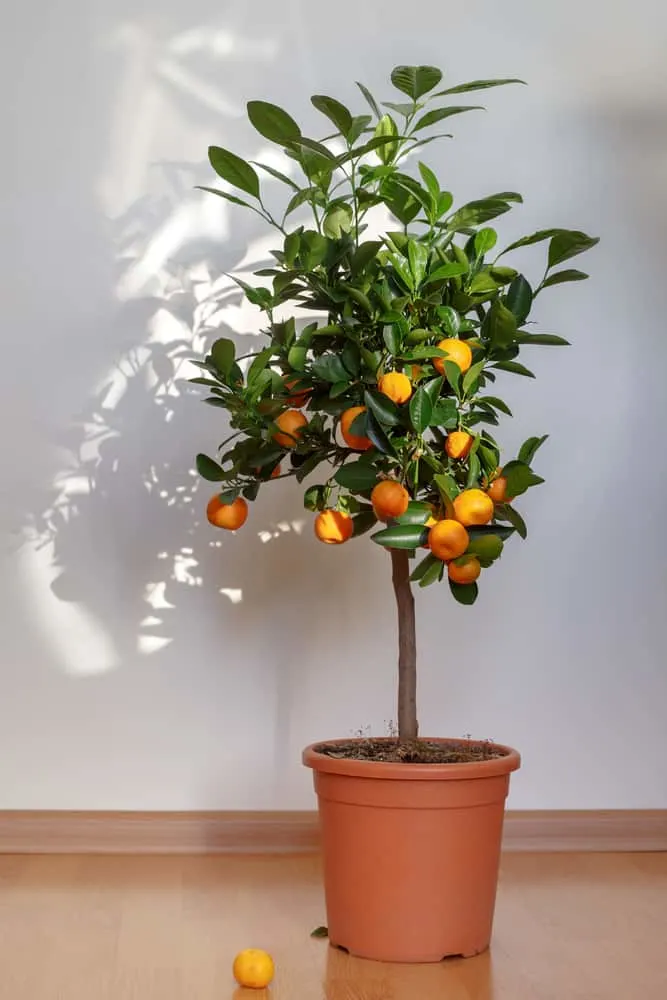
I have three peach trees in my front yard. In the past five years, I have had only one good season of peaches. I’ve had bears eat the peaches and break branches in the middle of the night. I’ve had bugs and mold wipe out my fruit. And forget about controlling the weather. A cold or rainy season means little to no fruit.
Growing indoors means you get to control everything from the light to humidity, right down to the nutrients your tree gets.
In general, most fruit trees won’t produce fruit until they are around 1-2 years old. While you can start most of these from seed, you won’t be harvesting fruit any time soon. If the fruit is what you’re after, purchase the most mature tree you can find.
Your tree will most likely start in a smaller pot. If it’s healthy, resist the urge to transplant it into a large container right away. Plants will spend their energy where it’s needed most.
If they are snug in a smaller pot, they will produce fruit. When they are transplanted to a larger container, they will put their energy into filling that new space with roots, and it will be a while before they produce fruit again.
Repotting a sizeable indoor tree can be quite a hassle. Instead, replace the first top two inches of soil with fresh potting soil every year.
Eventually, though, moving your tree into a larger pot will become a necessity. Be sure to give your tree room for its roots to grow. You’ll also need one to two inches of drainage material in the bottom. Move up one pot size at a time when transplanting.
Another thing to consider is how heavy your tree will be in its large container. Depending on the tree, moving it to get better light or to put it outdoors in the summer can be difficult.
Pick up a plant stand with casters on the bottom to make the job easier. This dish-style stand prevents water from getting on your floor as the container sits in the dish.
Of course, if you’re serious about getting fruit, then your trees will eventually need bright light to ripen your crop.
This can be accomplished in several ways – you can move the plant outdoors during warmer months when it’s fruiting. You can move the plant closer to a window that gets longer and brighter light. Or you can purchase a couple of grow lights to help mother nature along.
With the use of LEDs, grow lights are relatively inexpensive these days. They come in all shapes and sizes. Hanging grow lights and gooseneck lights are popular and easy to set up to give your fruit trees a boost.
And when you aren’t using them to produce fruit, they are excellent light sources for starting seedlings for your garden.
12 Fruit Trees You Can Grow Indoors
Citrus is probably the first and obvious choice for an indoor fruit tree. A few rules apply to all citrus.
- Don’t let their soil dry out. Citrus trees like moist (not water-logged) soil, and prefer a loamy soil mixture.
- Keep them misted with a fine-mist plant sprayer.
- Fertilize citrus trees regularly with a fertilizer blend made specifically for citrus, such as Jack’s Classic Citrus FeED.
- Most citrus takes anywhere from six to nine months to ripen; the tangerines can take up to 18 months.
1. Lemon Tree
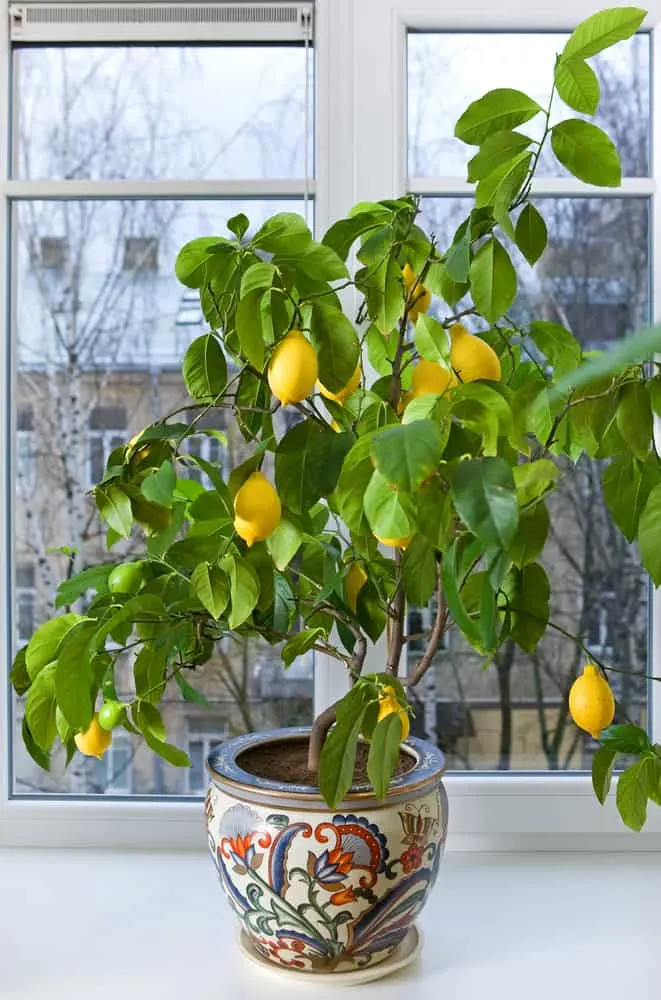
The Meyer lemon is probably the most well-known indoor fruit tree, and for a good reason. It’s compact size, and delicious fruit makes it a natural choice for your sunny living room.
Meyer lemons are self-pollinating and take a couple of years to bear fruit.
Even the dwarf trees can grow up to 8’ tall, so pruning your tree is necessary to keep it small.
The Meyer lemon needs around 6 hours of full sun a day. It does best in well-drained soil that is kept slightly moist.
2. Lime Tree
Key lime and kaffir lime are popular dwarf citrus trees.
The key lime produces small, thin-skinned fruits. This tree will need to be hand-pollinated. This is easy enough to do with a small, clean paintbrush by gently brushing the insides of each flower.
Be sure to purchase a dwarf variety, and you’ll be making key lime pie before you know it.
The lesser-known kaffir lime is prized for its leaves used in cooking to add a bitter bite to dishes. The fruit’s juice and rind also produce a wonderfully fragrant scent.
Both the key lime and the kaffir prefer full sun. If you can, put them outside during the warmer months.
3. Orange Tree
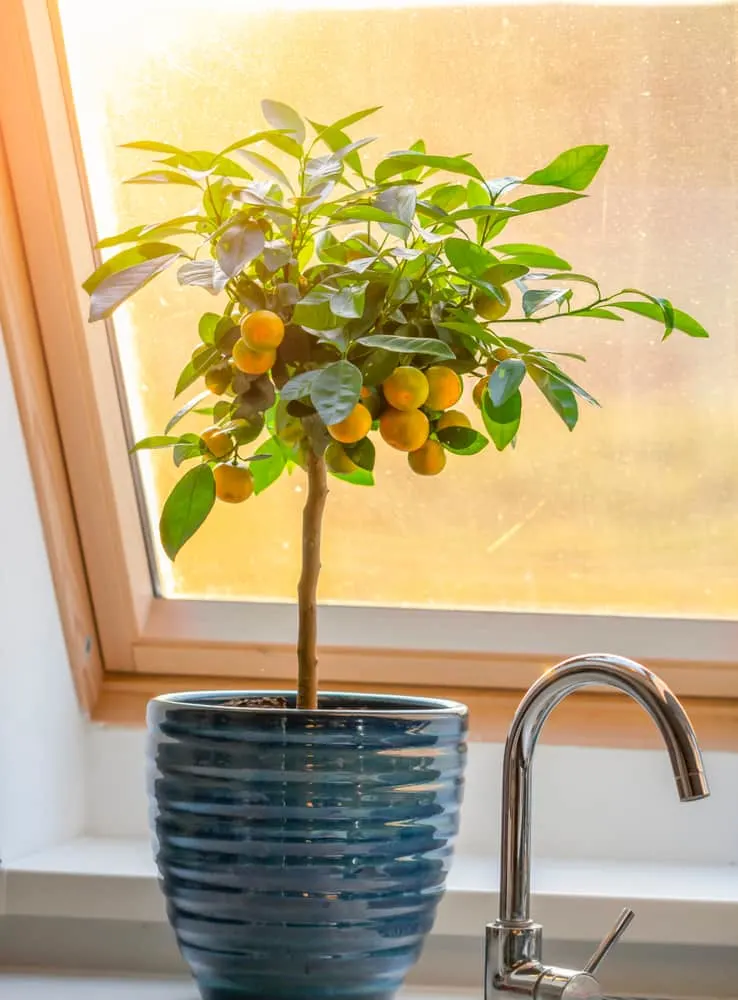
Calamondin orange trees are an especially easy fruit tree to grow indoors.
The fruit is a cross between a kumquat and a mandarin orange. They are extra tangy, and their thin skins are super sweet. These would be an excellent choice for anyone looking for a fun citrus for cooking. They prefer full sun.
Some tangerine varieties can also be purchased as dwarf stock. Again, look for a self-pollinating variety.
4. Fig Tree
Growing figs in your home is better than waiting for them to show up in the grocery store when they are finally in season.
The Brown Turkey fig is ideally suited to growing indoors, and it’s self-pollinating.
Figs prefer a humid environment, so mist them regularly.
Grow your fig in loamy soil and place it in a location that gets full sun for 6-8 hours a day.
5. Olive Tree
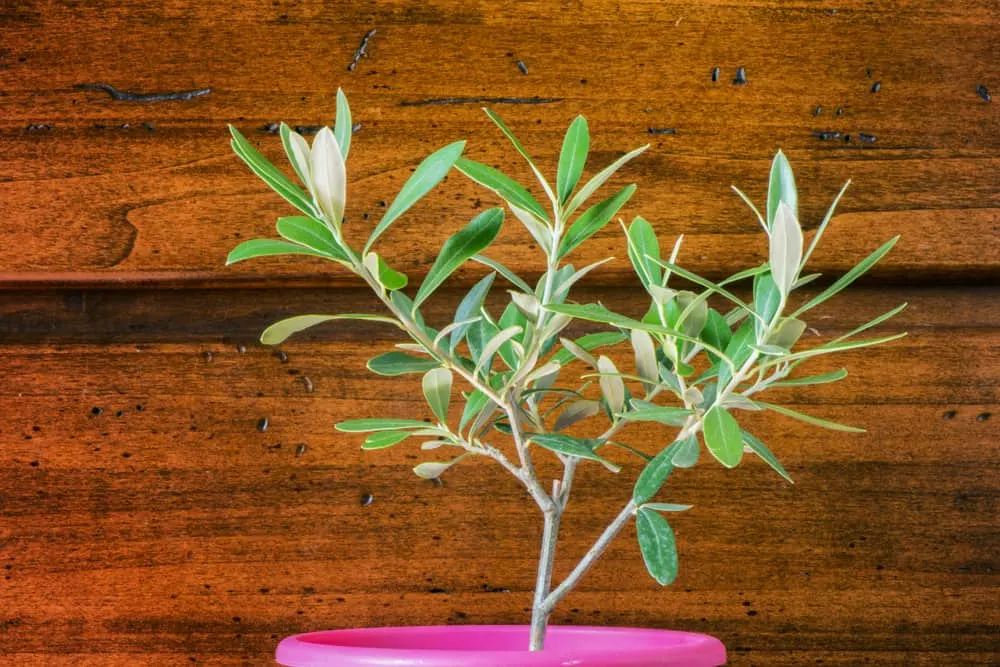
While maybe not what most people consider a fruit, an olive tree is a beautiful fruit tree to grow indoors.
Consider the Arbequina, well-suited for containers. Olive trees prefer well-drained soil and plenty of light, at least 6 hours a day.
If you want fruit, they will need to experience a period of about two months worth of cooler temperatures. You can move them to a garage or shed that is cool in the fall or winter to accomplish this.
Don’t forget the leaves!
Olive tree leaves make a wonderfully flavored tea and have many health benefits too.
6. Passion Fruit Tree
Passion fruit technically grows on a vine, but I included it because it’s quite easy to grow indoors.
Like most of our other trees, it prefers well-drained soil and at least six hours of sunlight a day.
You will need to give your passion fruit a trellis to climb up. Passion fruit likes to be kept moist, but not soggy, so water it frequently. Choose a bonsai variety, like the Mapplegreen passion fruit.
Along with delicious fruit, this “tree” will provide you with gorgeous flowers too.
7. Peaches and Nectarines
Wait, you can grow peach and nectarine trees indoors too?
Yes, yes you can.
Just be sure to choose a dwarf variety that is self-pollinating, and there are several.
Bonanza, Golden Glory, Nectarcrest, Dwarf Sweet China are just a couple of popular dwarf varieties.
Make sure your tree is planted in a large pot with loamy soil. Remember, you want the roots to be snug in the pot as this will encourage fruiting. Fertilize your tree regularly and be sure it gets at least six hours of bright sun a day.
Peaches and nectarines do best with lots of sun. Keep them moist, but not soggy, and don’t let the soil dry out completely between watering.
8. Apricot
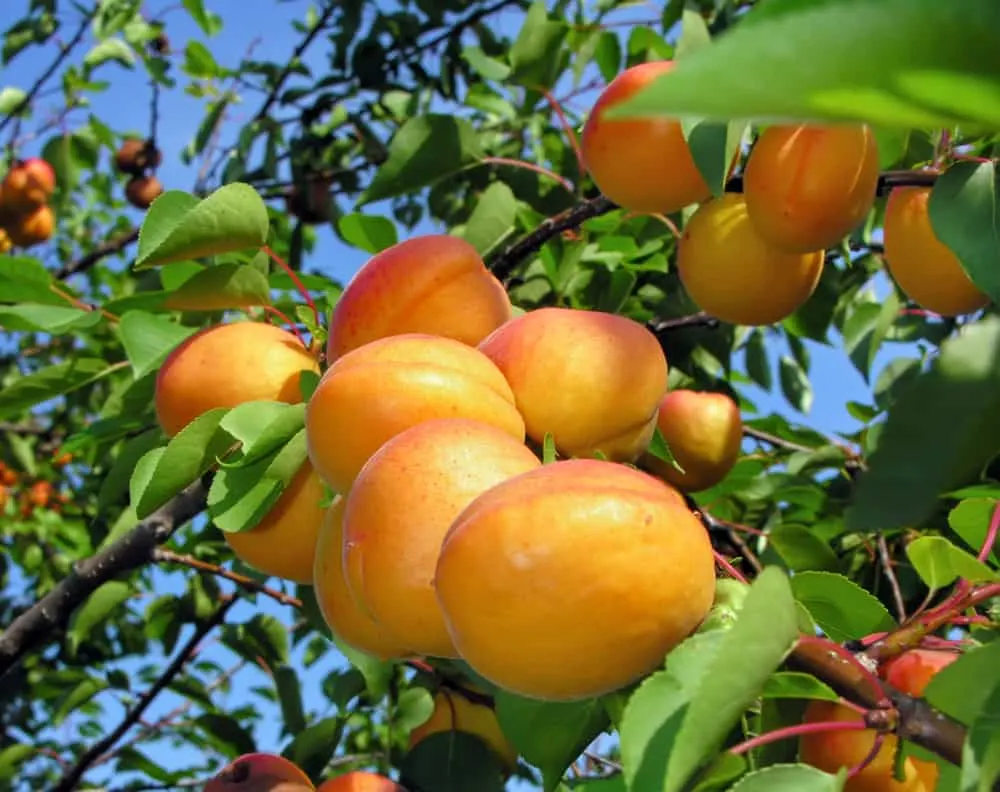
Most of us know apricots from the dried variety commonly found in the bulk food section.
Fresh apricots are so much better (and can be made into this delicious jam!) making it an ideal indoor fruit tree choice.
The Moorpark is an excellent dwarf apricot, reaching only six feet high. As with most indoor trees, you can prune it, so it stays smaller and compact.
Give your apricot tree well-drained soil in a snug pot. Be sure it gets plenty of sun, 6-8 hours a day. If you have a south-facing window, that would be the best location for your apricot tree.
Water your apricot regularly and be sure the soil doesn’t dry out between watering.
9. Avocado Tree
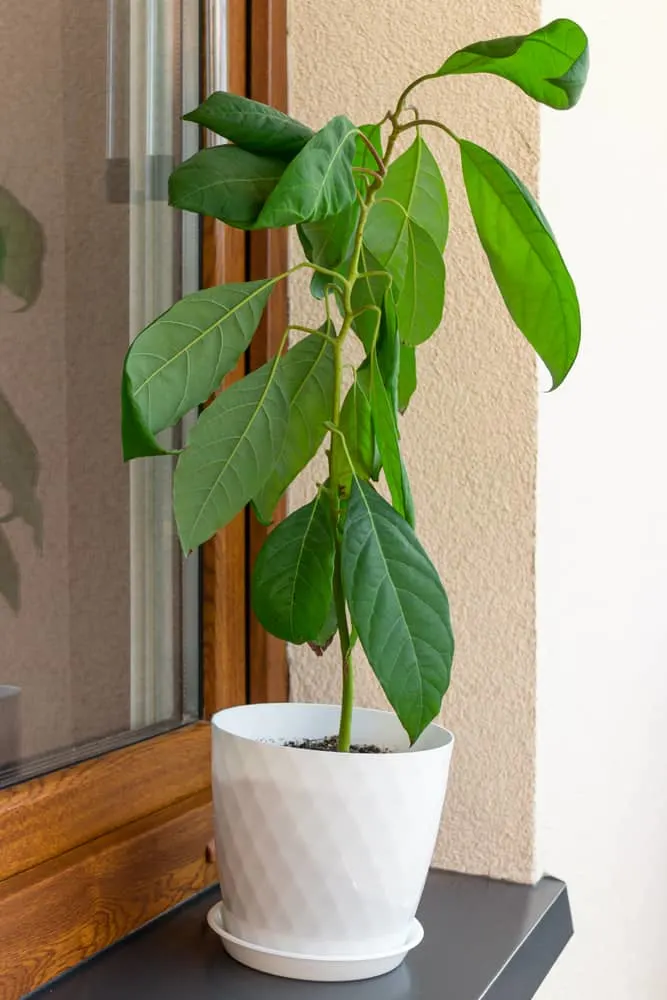
If you’ve ever started an avocado tree from the pit of an avocado, then you’ve probably dreamed of picking your own fruit from that little seedling.
Unfortunately, this is one fruit tree that is very difficult to get fruit from indoors.
While not impossible, indoor avocado trees generally don’t produce fruit.
They are still a beautiful fruit tree to have in your home. If you are using a seedling you started from a pit, you’ll need to prune it regularly as it starts to grow.
Most non-dwarf varieties grow quite tall. As always, choose a loamy, well-draining soil for your avocado tree and pick a location that gets bright sun for at least six hours per day. Keep your avocado’s soil moist, but not soggy.
10. Banana Tree
Bananas, like avocados, are another fruit tree that can grow insanely tall.
To enjoy the tropics in your home, though, choose a dwarf variety of banana tree. Some of the dwarf varieties can get quite tall as well, so give the Lady Finger banana a try. They top out around 4’ tall and produce slim, tiny bananas.
Like most tropical plants, bananas need lots of sunlight and humidity. Be sure your banana tree gets full sun for 6-8 hours a day. A southern exposure window is best.
Replicate humidity by misting your tree often. When your house is hot and dry, you can even get away with daily misting.
11. Mulberry Bush
Mulberry bushes make excellent indoor plants and are one of the easiest to grow.
Good potting soil with a layer of drainage material on the bottom will get you started off right. And like most fruit trees plenty of bright light is needed.
Two dwarf mulberries that are perfectly suited to container growing are the ‘Everbearing’ and the ‘Issai’ varieties.
Fertilize them every six months and prune to keep them compact, and you can expect to enjoy the sweet fruits of your labor.
12. Ground Cherries
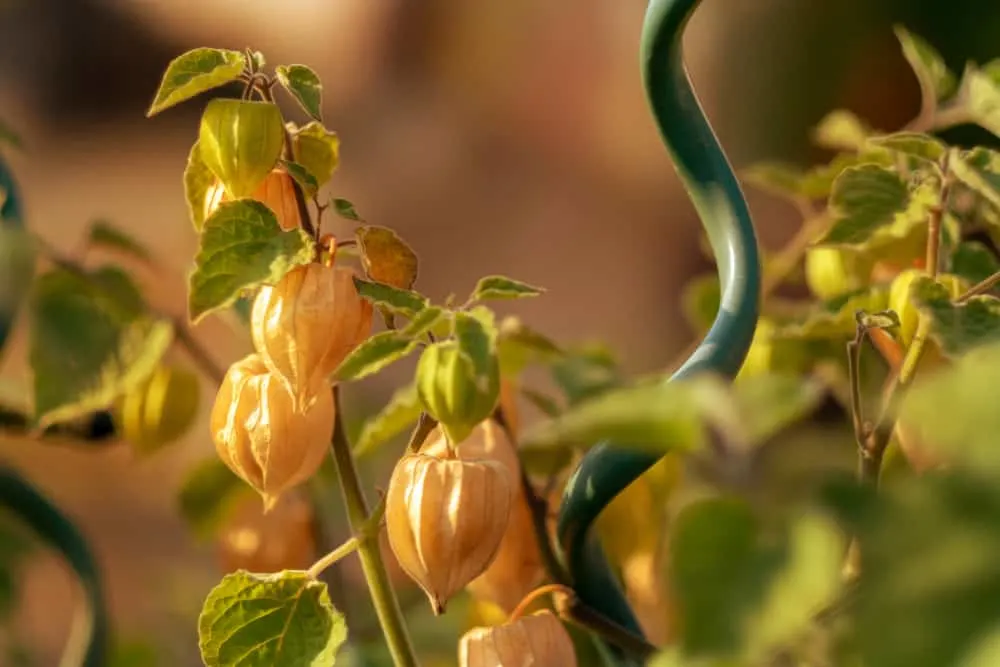
Also known as Cape Gooseberries, ground cherries aren’t technically a tree. I included them here because they are an easy, bushy fruit to grow indoors. Not too many people know about them.
I’ve often heard the flavor described as a mash-up between a pineapple and a tomato. I think they taste more like eating a pie. There is a smooth, almost apple flavor with a buttery finish. They taste more like a decadent dessert than a funky little fruit. They are delicious!
Start your ground cherries from seed in a pot that’s at least 8” deep. Well-drained soil with a bit of compost mixed in will keep your plant happy. They do best in full sun.
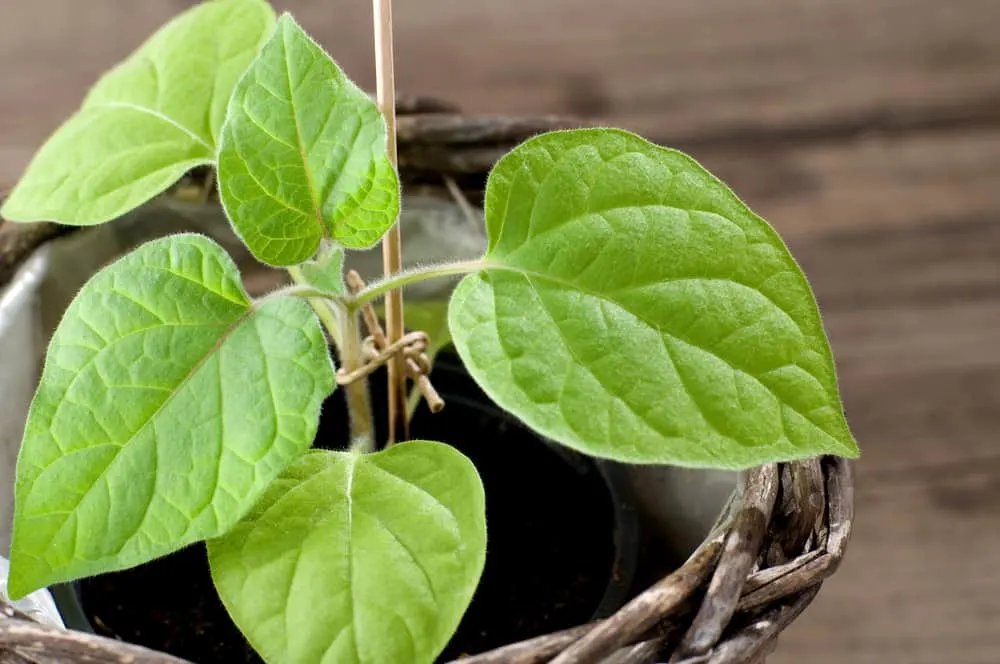
Give this compact plant a try. I don’t think you’ll be disappointed.
Now that you know which fruit trees you can successfully grow indoors, you may end up with a veritable fruit salad in your living room.
These elegant and stately plants make a beautiful statement in your home. Which one will you be growing?
How to Grow a Beautiful Coffee Plant Indoors
Pin This To Save For Later
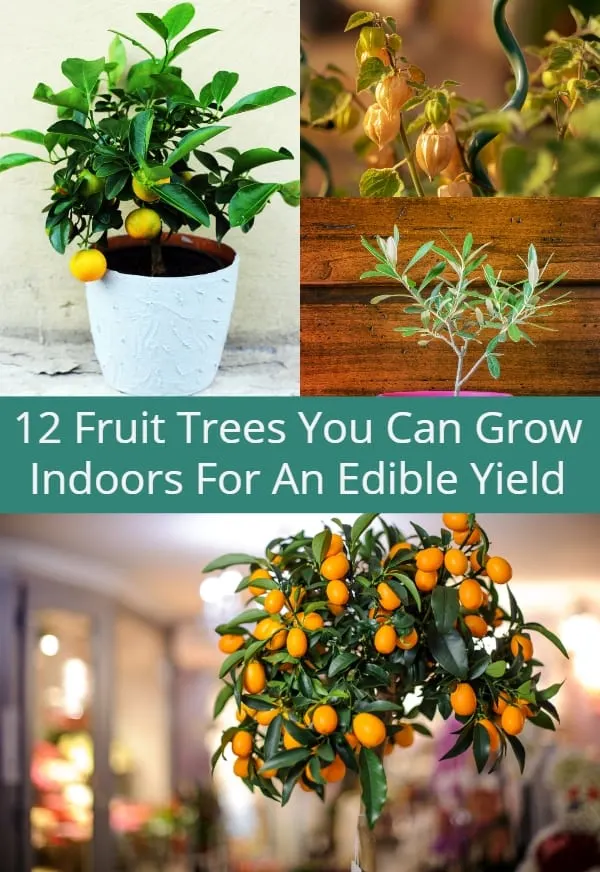

Get the famous Rural Sprout newsletter delivered to your inbox.
Including Sunday musings from our editor, Tracey, as well as “What’s Up Wednesday” our roundup of what’s in season and new article updates and alerts.


